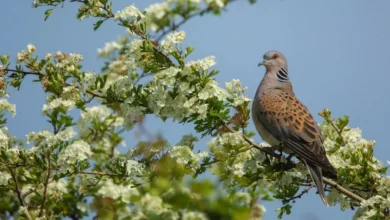How do cats purr? New study reveals the details

Cats are known for many things, but their distinctive purring sound, a low-pitched rumble that comes out from their vocal cords.
Researchers have finally unlocked the mystery of the signature sound that cats make.
This new study reveals that cats have squishy pads that help them produce this sound. Voice scientist, Christian Herbst from the University of Vienna in Austria, and his team of international researchers found that the “purring pads” of connective tissue embedded in the vocal folds, also known as the larynges, are what help increase the density, making them vibrate more slowly to produce the rumble.
Previously, scientists believed that active muscle contractions resulted in the production of purring.
However, the new study reveals that purring might be a passive aerodynamic behavior that continues automatically, even after the brain sends an initiating signal.

The scientists found that cats’ vocal cords are much shorter than in humans, but they can still purr because of these pads’ ability.
The collagen, elastin fibers, and other structures in the vocal cord’s connective tissues are arranged in such a way that they dampen the high frequencies of the sounds, enabling small cats to purr.
Even without neural input and muscle contractions, the larynges produced a self-sustained vocal fold oscillation at frequencies in the range of domestic cat purring.
Although the reason why cats purr is still not fully understood, some theories suggest that it indicates contentment and encourages further interaction with humans.
Researchers have even suggested that purring could be a healing mechanism, relating to lowering stress and anxiety levels.
The findings of this new study could help scientists develop new technologies that mimic the purring sound, such as calming devices for cats or even new treatments for pain and anxiety.
Although the reason why cats purr is still not fully understood, even without neural input and muscle contractions, the larynges produced a self-sustained natural vocal fold oscillation at frequencies in the range of domestic cat purring.

This new study showcases that muscle contraction is not essential for purring, but the connective tissue structures could be the primary driver.
Further research needs to be conducted by measuring the process in living cats. The new study could provide new insights that could help researchers better understand how to keep our feline friends healthier and happier.
The study has been published in the ‘Current Biology’ journal.










